Do you regularly visit Starbucks by the corner to get your coffee? Or do you know someone who does?
Roughly, you spend about $1.85 for a cup of coffee daily.
Now, think of not just you but the hundreds and thousands of people who do that daily, some multiple times a day. It all adds up to the bottom line of Starbucks.
That’s customer retention.
And that’s what every business wants, a continuous cycle of paying customers, not just first-timers.
The truth is if you want to see your monthly recurring revenue (MRR) and annual recurring revenue (ARR), you can’t settle for just the first customer purchase alone.
In this article, we’ll define customer retention, how customer retention is calculated, what’s a good customer retention rate per industry, and how to use CRO to increase customer retention.
What is Customer Retention, and how to Calculate it?
Customer retention refers to a company’s ability to turn first-time customers into repeat purchasers. This means stopping them from switching to a competitor.
If your company sees a lot of repeat customers and can keep them dialed in, you’ll have a good retention rate.
On the other hand, it’s possible your business has a lot of first-time purchases but a low repurchase rate, and this is due to the type of products you sell e.g. TVs.
In this case, not much can be done to encourage shoppers to keep buying from you because most TVs’ lifespan is 2 years.
In this case, you can upsell and cross-sell additional products that work well with the TV they might need.
This way, you increase your AOV, and your revenue is bulkier than when it was just TVs you sold.
Customer retention works in two ways;
- The first way it seeks to keep existing customers is by having them purchase their favorite items. An example is subscription brands. Here, the customers keep buying the same product repeatedly, either monthly or quarterly, etc.
See this example from Birchbox;
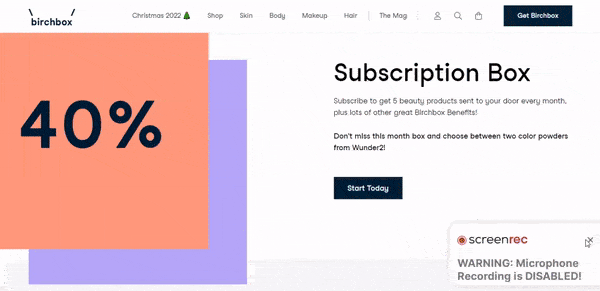
For just $13.95 a month, subscribers get five beauty products sent to them, plus other benefits. There are other payment plans for three months and six months.
This is the first-way customer retention works.
- The second way customer retention works is y encouraging existing customers to invest more in products through cross-selling and upselling.
Here’s the formula to calculate the customer retention rate (CRR);
1. Find out how many customers you have at the end of a given period (week, month, or quarter).
2. Subtract the number of new customers you’ve acquired over that time.
3. Divide by the number of customers you had at the beginning of that period.
4. Then, multiply that by one hundred.
Customer Retention Rate Formula; – (# of customers at the end of a period) – (# of new customers acquired over that period of time)
(# of customers at the beginning of the period) X 100)
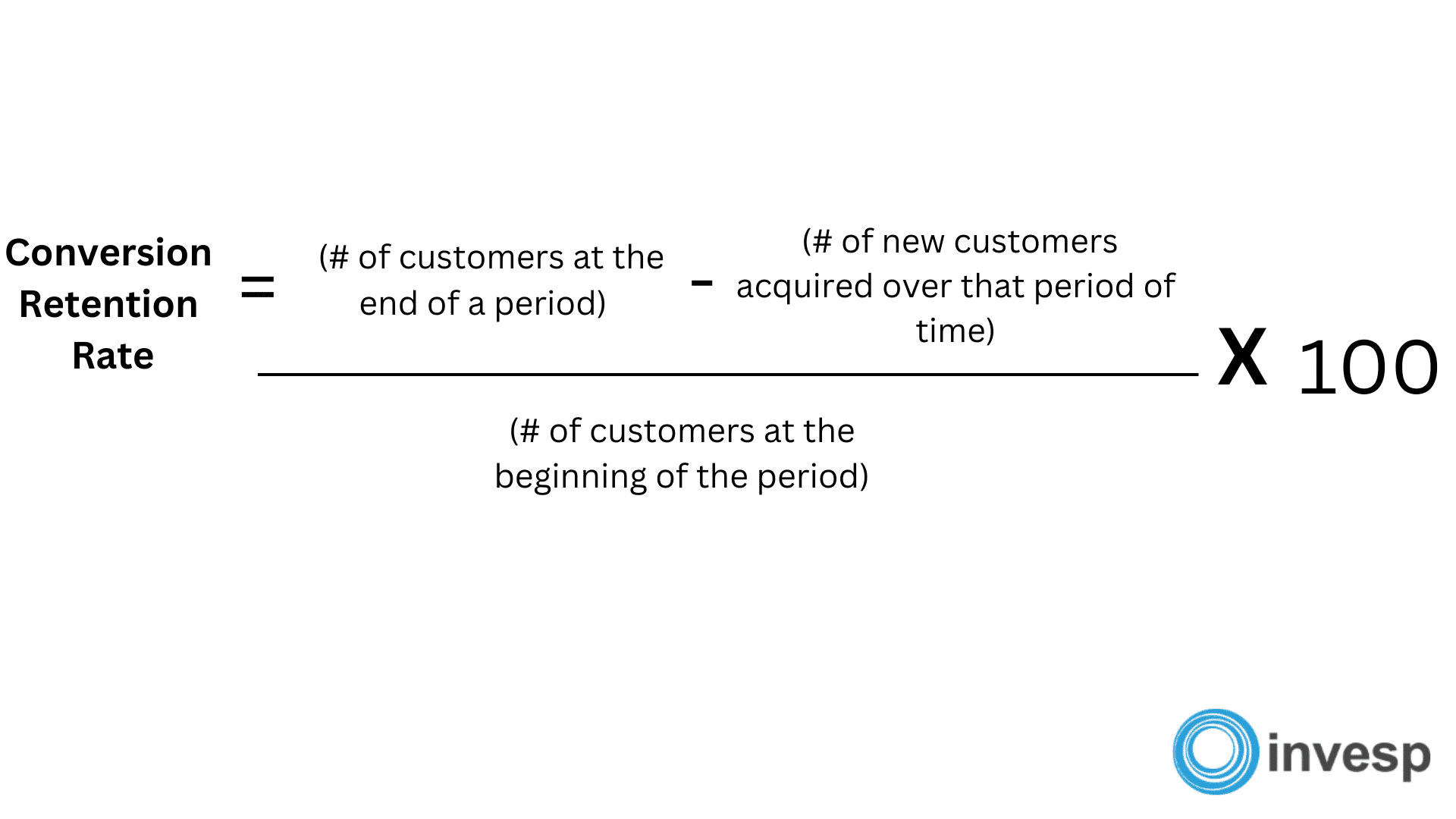
Here’s a scenario to consider;
If you had 2 000 customers at the beginning of Q1 and ended the quarter with 2,500 customers after winning 700 new ones throughout Q1, your CRR would be 90%.
2,500 – 700/2000 X 100 = 90
Customer retention can also yield these important insights for your business;
- The percentage of customers who return as visitors week after week.
- The percentage of customers who purchase monthly.
- Whether a newly released product led to an increase or decrease in customer retention.
What is A Good Customer Retention Rate?
The average customer retention rate varies from Industry to Industry.
According to a Statista report, here are the average CRR across several industries;
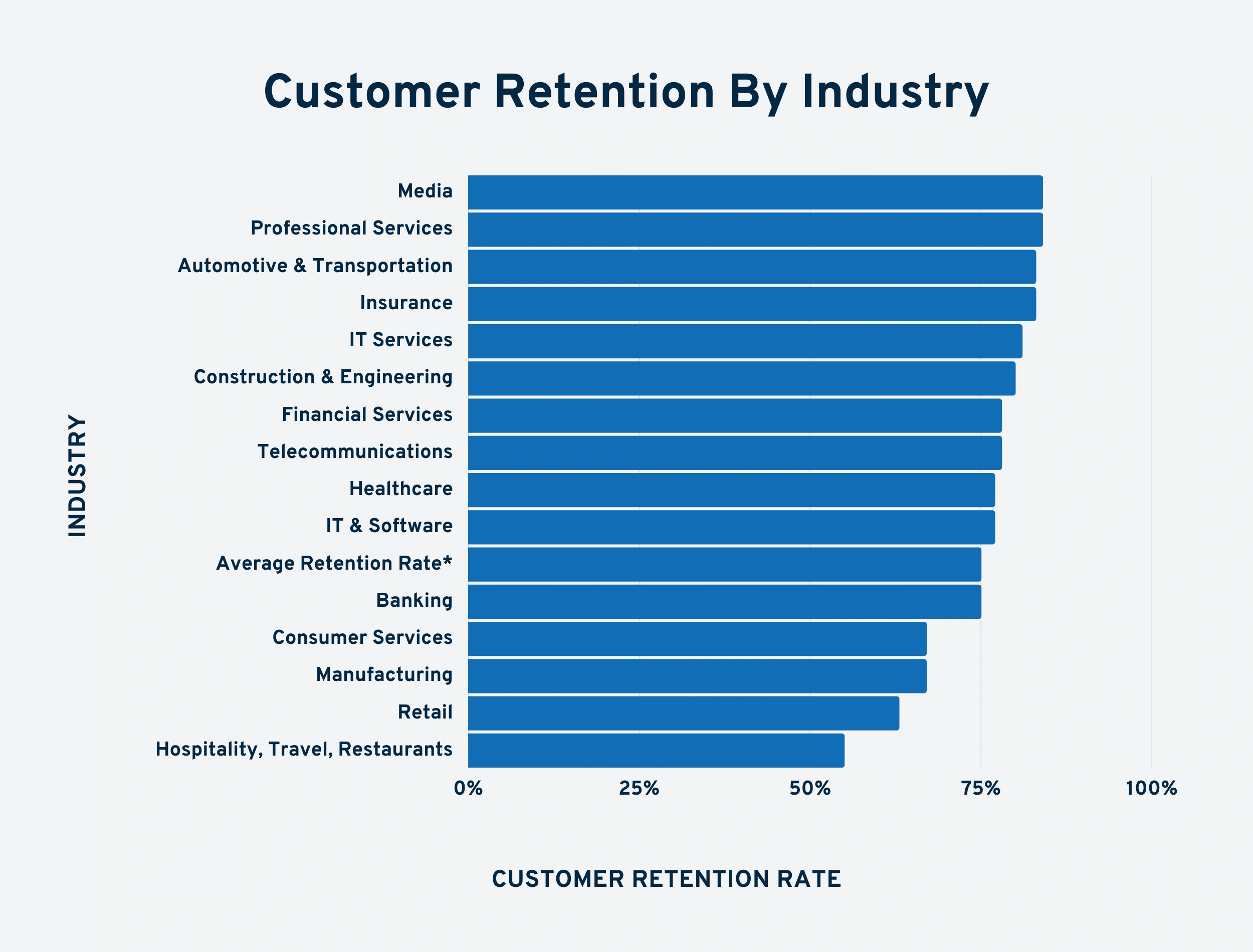
According to Giorgias, the average accepted retention rate for the eCommerce industry is 31%.
Depending on customer satisfaction, loyalty, and positive experience, some businesses may experience higher retention rates.
Businesses that focus only on first-time customers, and not much priority is placed on retention, they’re bound to have low retention rates.
Why is Customer Retention Important?
Customer retention doesn’t just measure how a company is great at getting new customers but how well they satisfy existing customers.
Below are a few reasons why customer retention is important to a business’s success.
1. ROI – according to a study by Media brain, a 5% increase in customer retention can boost a business’s revenue by 25 – 95%
2. Loyalty – because of positive customer experience, a good deal, etc., customers become loyal to your business and keep coming back.
3. Cheaper to retain – It costs a business 6 – 7X how much it costs to retain one customer. Looking at this, customer retention is more affordable.
4. New customers by referrals – satisfied customers are happy customers, and what do satisfied customers have in common? They share with their friends everything about your business.
Increasing Customer Retention Rate: how CRO helps.
The reason why customers stay with a business and keep buying from that business is trust.
There are trust factors you can add to your site now that can improve how site visitors and shoppers perceive your brand.
If you Google ‘website trust factors and examples,’ you’ll get 185, 000,000 results with answers like;
- Design
- Awards and certifications,
- Case studies,
- Testimonials as ways to build trust on your website.
If you go with these, you might get a bump in conversion rates or retention, but it’ll be guesswork because you can’t say what exactly worked.
This is where CRO comes in. With conversion optimization, you can easily build the trust factor into your site systematically while reducing and eliminating uncertainty and fear factors.
Outlined in this section are ways you can use CRO to improve your site trust factor, which greatly impacts customer retention rate.
1. Personalization with A/B testing:
Every customer wants to feel unique and special. I’m sure you’ll agree with this statement.
The more personalized the experience, the more the customer subconsciously wants to make that purchase.
But before you can perform personalized A/ B tests, you need to get some information on your customers.
Details like;
- Name
- Preferences
- Shopping history
- Preferably an account with your business, etc.
All these details pool into a library of insight you can use to create a more personalized experience for each customer.
There are two ways to A/B test personalization;
- On your site
- Through email marketing
- On your site:
Personalization allows you to serve different variations of your site to site visitors based on their interests and different contexts.
Having more than one variation of your site pages allows you to present different offers, messaging, and navigation which ultimately affects user experience and reflects in the initial purchases and recurring purchases (customer retention).
The truth is, many businesses are already personalizing their site and increasing their chances for customer retention by;
- Having different landing pages for different audiences and campaigns.
On a deeper level, there are two ways to go about this;
- For the first one, you can test potential personalizations using an A/B testing tool.
To do this, you set up an audience for each segment you create and then A/B test within that audience.
You must first predefine each target segment based on data you have about them. Remember the information you’ve collected before, which I highlighted, yes? It comes in handy here.
Then create an audience that matches this definition (based on your insights), then create an A/B test for each segment.
For each A/B test, assign the corresponding audience that ensures it’s only shown to that segment. You will find the best page (A or B) to show this segment.
This way, you’re sure to increase customer retention from each segment which positively impacts your bottom line.
- The second way to go about this is rules-based personalization. This is simple and direct to the point.
To do this, you set up a series of rules to define targets for a specific segment and/or context. Then activate an A/B test within each rule. This test will only be shown to the visitors who are eligible to see this rule.
One A/B testing tool that’s great for personalization is Adobe Target.
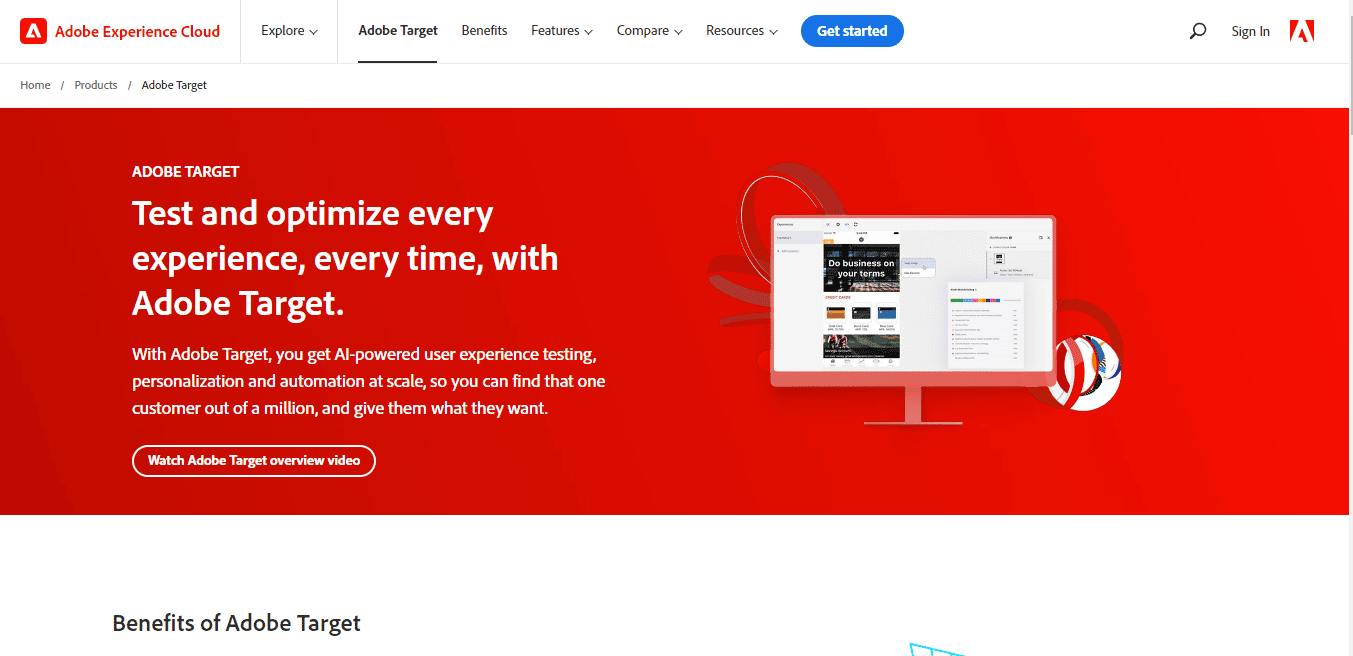
The Adobe Target solution can be licensed as Target standard or premium, and you stand to enjoy these benefits;
- Rule-based targeting activities (perfect for A/B testing to provide a more personalized experience and increase customer retention rate).
- Automated personalization – records visitor activity on the site, building a profile of visitors so content can be targeted to similar visitors.
- Auto Target – helps personalize content and drive conversions
- Recommendations – this displays products or content to users based on past activity. This is a big step in improving the customer experience, which improves retention.
- Through Email Marketing.
This second approach allows you to A/B personalization at scale, improve customer experience, and increase retention.
Consider this scenario;
You’re an eCommerce store focused on selling male and female wear. You have a segment of customers who have purchased many male items; they’ve got an account with you but also purchased female items at least twice or thrice.
Looking at this situation, you already know these customers are most likely male, looking at their shopping history.
To further personalize this segment’s experience and increase their retention rate, you can create an email flow using Klaviyo ahead of a shopping season like Valentine’s and send them gift ideas for male and female wear.
Depending on which offer your email subscribers click on, you now have more information on them.
You make the sale, you know more about that segment of subscribers (what works and not), and your retention rate is growing strong.
Note: you can apply this logic to other segments, make more sales and increase retention.
2. Usability Testing:
This is the process of testing how easy a product or site is to use with some users.
Not to be mistaken with user testing, which is about observing how users interact in real life with your product.
Usability testing is a popular user experience research method.
It involves a facilitator (moderator) and a set of participants who are given tasks to complete on a site and report on their experience.
Tasks here refer to specific activities on a website like;
- Make a purchase
- Search for an item
- Add X number of items to the cart.
The reason for conducting usability tests is;
- Identifying problems on your website,
- Uncovering opportunities to improve, and
- Learning about the target user’s behavior and preferences
With these all in place, you improve customer experience and satisfaction, reflecting increased customer retention.
Look at it this way; usability testing allows you to get testers that help you uncover site issues, issues that could aggravate customer frustrations, which, when you work on resolving them, improve your business’s chance to grow your retention rate.
There are four types of usability testing you can carry out;
- Qualitative usability testing – focuses on collecting insights, findings, and anecdotes about how people use the product or service. Qualitative usability testing is best for discovering problems in the user experience.
- Quantitative usability testing – focuses on collecting metrics that describe the user experience. Quantitative usability testing is best for collecting benchmarks.
- Remote moderated usability testing – the facilitator and participant are in different physical locations. The facilitator still interacts with the participant and asks her to perform tasks. Usually, moderated tests can be performed using screen-sharing software like Skype or GoToMeeting.
- Remote unmoderated usability testing – remote usability tests do not have the same facilitator–participant interaction as in-person or moderated tests. The researcher uses a dedicated online remote-testing tool to set up written tasks for the participant. Then, the participant completes those tasks alone on her own time.
Here are some examples of user testing software you can use;
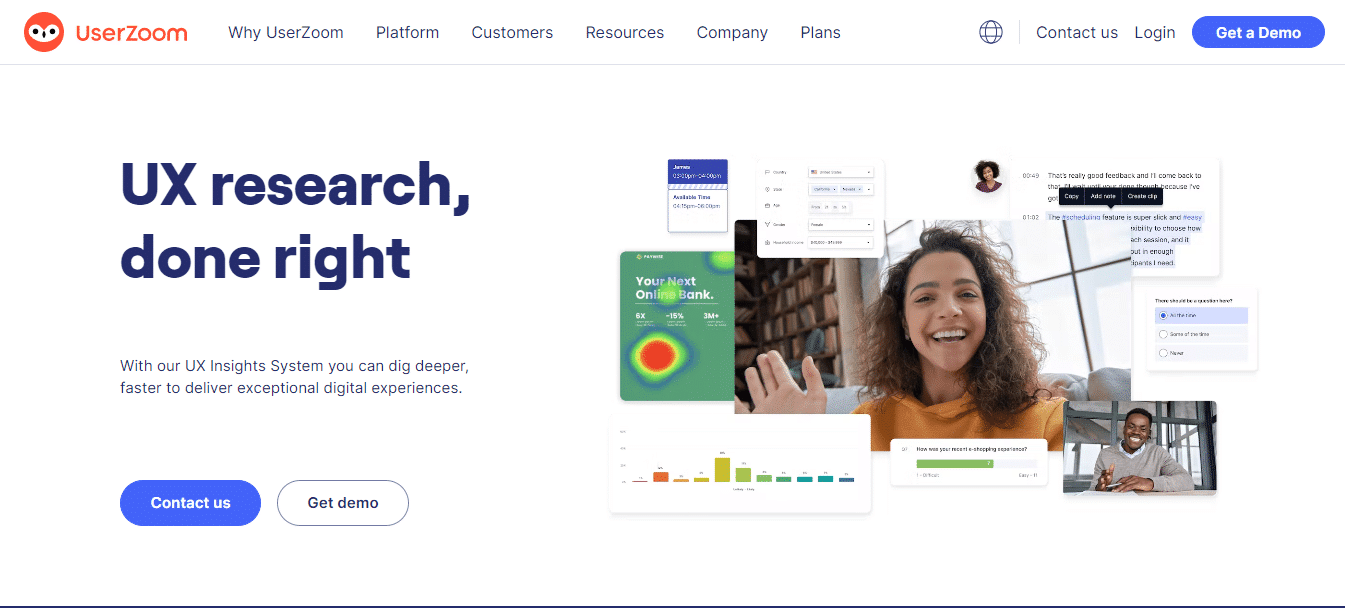
With Userzoom;
- You can conduct usability tests (unmoderated),
- Interviews (moderated),
- User testing survey, and
- Website usability testing, etc.
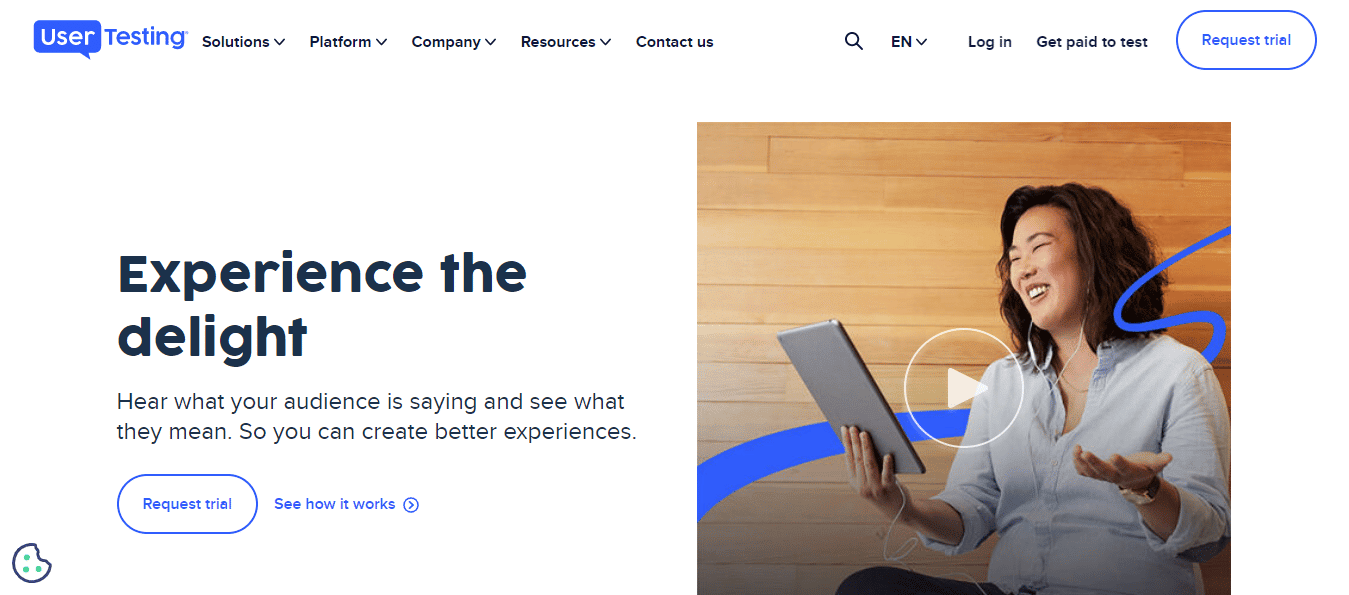
With Usertesting;
- You can carry out unmoderated usability tests,
- Moderated usability tests, and
- Invision user testing by sending your participants a prototype link to go through.
3. Collect feedback
Customers are the heart of every thriving business. Not the fancy products, amazing sales service, or anything, but the customers.
Since you want to retain customers, it’s important you talk back to the customers and find out from them what works and what you can improve on.
You can achieve this in 3 ways.
- Email feedback – many businesses only ask for feedback from their subscribers when they’ve made a sale. This approach is partly good. The best way to go about this is to get feedback regularly from your subscribers.
You can ask them questions about;
- how their experience has been on your site so far,
- what’s working and could be improved on,
- what products they want to see,
- You can also offer an incentive, etc.
Here’s an example from Kate Spade;
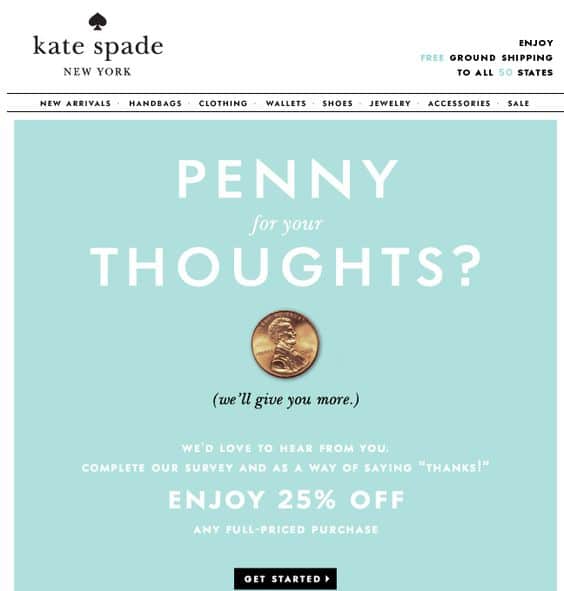
- Forms on your site – feedback forms on your site are great for hearing from visitors who might be their first time on your site or aren’t on your email list.
This feedback helps point out what’s working and the customer experience. If you act on this feedback, you are sure to improve customer experience.
See this example from Columbia;
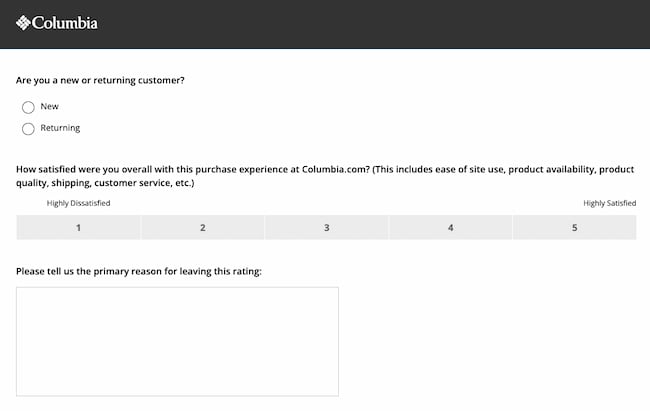
- Post-purchase feedback – you’ve just made a sale, but that’s not the end of the road.
It’s important you regularly hear from every customer who shops from you how their experience was, what they’ll like to see improved etc.
You can collect your NPS score, product reviews, delivery reviews, etc. all these point out to the customer that you’re interested and care, and this puts them in the mind frame to buy from you again.
See this post-purchase feedback example;
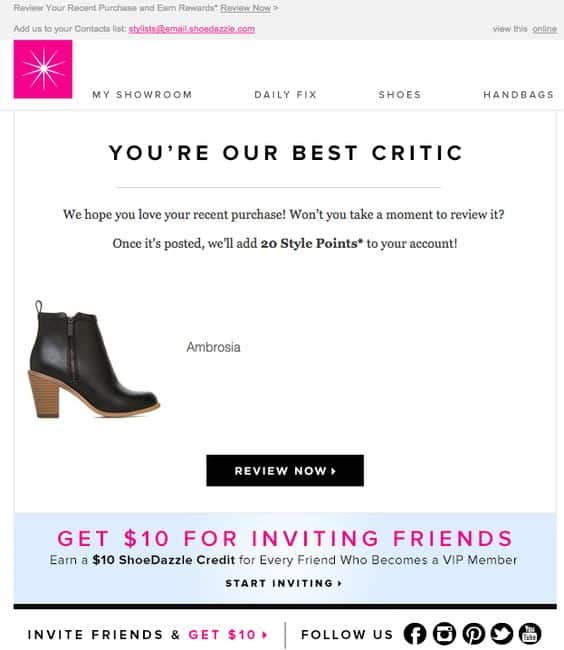
Source:Pinterest
Wrapping Up
First-time purchases are great; recurring purchases are better.
If in doubt about how to go about building trust with your customers, which is the engine for repeat purchases, use CRO.
The tactics outlined in this article will help you improve your customer retention.



